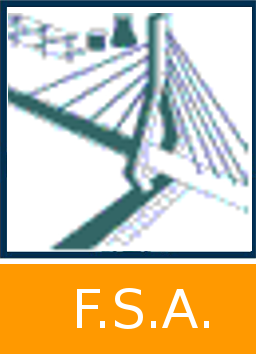Final work : Numerical investigation of the ground vortex ingestion into the intake under crosswind
Chennuru, Venkata Yashwanth Teja 
Promoteur(s) :
Dimitriadis, Grigorios 
Date de soutenance : 5-sep-2022/6-sep-2022 • URL permanente : http://hdl.handle.net/2268.2/15929
Détails
| Titre : | Final work : Numerical investigation of the ground vortex ingestion into the intake under crosswind |
| Auteur : | Chennuru, Venkata Yashwanth Teja 
|
| Date de soutenance : | 5-sep-2022/6-sep-2022 |
| Promoteur(s) : | Dimitriadis, Grigorios 
|
| Membre(s) du jury : | Hillewaert, Koen 
Vahdati, Mehdi |
| Langue : | Anglais |
| Nombre de pages : | 89 |
| Mots-clés : | [en] Ground vortex ingestion [en] Unsteady distortion [en] Crosswind conditions [en] Numerical setup |
| Discipline(s) : | Ingénierie, informatique & technologie > Ingénierie aérospatiale |
| Centre(s) de recherche : | Imperial College London |
| Intitulé du projet de recherche : | Numerical investigation of the ground vortex ingestion into the intake under crosswind |
| Public cible : | Chercheurs Professionnels du domaine Etudiants |
| Institution(s) : | Université de Liège, Liège, Belgique |
| Diplôme : | Master en ingénieur civil en aérospatiale, à finalité spécialisée en "turbomachinery aeromechanics (THRUST)" |
| Faculté : | Mémoires de la Faculté des Sciences appliquées |
Résumé
[en] Aiming to increase aircraft fuel efficiency, Ultra High By-pass ratio (UHBR) engines are gaining
popularity. When operated under static or near static conditions, subject to crosswind, UBHR
engines can experience a lip separation on the windward side of the intake, and the formation
of a ground vortex extending from the stagnation point on the ground into the intake called a
ground vortex. These vortices create considerable stagnation pressure losses and flow distortion
at the engine fan face affecting the efficiency of the engine and structural integrity of the fan.
Furthermore, the ground vortices can generate forces that can suck debris from the ground
into the intake, mainly over poorly maintained runways. This Foreign Object Digestion (FOD)
can lead to compressor blades’ erosion, reducing the engine’s service life. Considering the
advantages of numerical analysis over full and scaled model experiments, the ground vortex
ingestion is studied numerically. The present work aims to provide the best numerical setup to
analyse this phenomenon using the experimental data for validation.
Initially, a few studies are conducted to determine the appropriate turbulence model and the
significance of the boundary layer profile for simulations. A grid sensitivity study is performed
using steady-state RANS, and the vortex is learned to be stable in low crosswind conditions.
URANS is solved for medium and high crosswind conditions to fully understand the vortex’s
unsteadiness using coarse mesh. The temporal convergence study determines the time stepping
for the unsteady simulation. This research demonstrated periodic vortex motion in medium and
high crosswind conditions at ≈10 Hz and ≈22 Hz, respectively. Furthermore, the separation
exists in high crosswind conditions, and the shear layer oscillates at a broadband frequency
rather than a single or narrow band. Good agreement is found between the time-averaged
URANS results and the experiment data using coarse mesh. The proposed numerical setup can
therefore be used for further analysis of ground vortex ingestion studies.
Fichier(s)
Document(s)
Annexe(s)
Citer ce mémoire
L'Université de Liège ne garantit pas la qualité scientifique de ces travaux d'étudiants ni l'exactitude de l'ensemble des informations qu'ils contiennent.


 Master Thesis Online
Master Thesis Online



 Tous les fichiers (archive ZIP)
Tous les fichiers (archive ZIP) Thesis_Venkata.pdf
Thesis_Venkata.pdf

